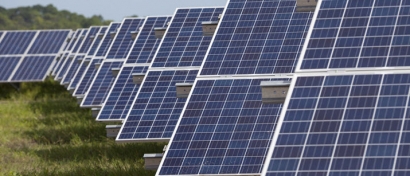
Through the "Solar Sanctuary" partnership, FPL and Audubon Florida are working with the Florida Wildflower Foundation, Florida Native Plant Society, Wildlife Habitat Council, local Audubon chapters and others to design and implement site-specific environmental enhancements that will make FPL solar sites bird- and pollinator-friendly havens.
FPL is on track to install solar panels at eight new solar power plants across Florida. The site of each new facility is being designed to allow a significant amount of the land to be planted with native grasses, trees, shrubs and vines. Plants are being chosen to provide food for birds and pollinators. Quality wetlands are being preserved, which also provide habitat for birds.
"FPL's solar sites are transforming large sections of land. What is exciting is that each site is being designed to make the best use of areas that can benefit wildlife. These Solar Sanctuaries will have benefits for generations," said Julie Wraithmell, interim executive director of Audubon Florida.
"We are proud to partner with Audubon and other dedicated environmental groups on this wonderful project," said Eric Silagy, president and CEO of FPL. "When Audubon Florida approached us with this idea, we knew it was something our company wanted to be a part of."
The FPL Coral Farms Solar Energy Center in Putnam County and the FPL Loggerhead Solar Energy Center in St. Lucie County are the first sites with approved plans to become Solar Sanctuaries.
"We commend FPL for recognizing the value of collaborating with local organizations like ours in customizing the use of native plants for birds and butterflies in diverse landscapes and enhancing the solar fields for a more natural environment," said Donna Halleran, 1st vice president of the Pelican Island Audubon Society in Indian River County, which is home to the FPL Indian River Solar Energy Center and the FPL Blue Cypress Solar Energy Center.
In addition to the four mentioned above, the following sites are also currently under construction and will be included in the Solar Sanctuary program:
Plans for each Solar Sanctuary designation will vary from location to location based on input from local conservation groups that will advise FPL on locally important birds, native wildlife, other natural resources and specific benefits that may be achieved by using certain types of plants and supplemental habitat aides.
Some enhancements that will be implemented include:
The program is expected to provide an added benefit to agricultural communities that neighbor many of the solar sites by attracting native pollinators that help farmers grow crops. Additional plans may include building bird perches and bird boxes and creating water recharge opportunities.

